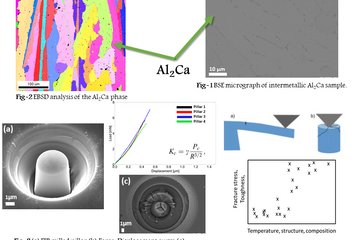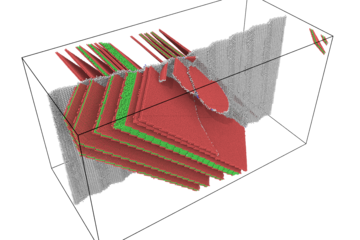All genres
241.
Talk
Investigation of delamination by spatiotemporal measurements of current and potential. Electrochem 2003, Southhampton, UK (2003)
242.
Talk
Anodic Polarization Behavior of Shape Memory NiTi-Alloy in H2SO4 Aqueous Solution. The Meeting of The Electrochemical Society of Japan 2003, Sapporo, Japan (2003)
243.
Talk
Controlling Film Properties in Microstructures on Single Grains of Titanium; A SDC, SECM and Imaging Ellipsometry Study. 54rd Annual Meeting of the International Society of Electrochemistry, Sao Pedro, Brazil (2003)
244.
Talk
Filiformkorrosion auf AA2024-T3. 18. GFKORR Arbeitskreis “Korrosion und Korrosionschutz von Aluminium und Magnesium zugleich 11. GfKORR Arbeitskreis „Kontaktkorrosion”, Helgoland, Deutschland (2003)
245.
Talk
Electrochemical Transients of Aluminium Alloys Generated by Slurry Impingement. Electrochemical Methods in Corrosion Research, Ysermonde, Nieuwpoort, Belgien (2003)
246.
Talk
Anodic Oxide Film on Shape Memory NiTi Alloy. 203rd Meeting of The Electrochemical Society, Paris, France (2003)
247.
Talk
From Discrete to Single Impacts in Particle Induced Flow Corrosion. 203rd Meeting of The Electrochemical Society, Paris, Frankreich (2003)
248.
Talk
In-Situ Study of Aluminium Repassivation by Using Scanning Droplet Cell Combined with Quartz Tip. 203rd Meeting of The Electrochemical Society, Paris, Frankreich (2003)
249.
Talk
Effect of Chloride Ion Concentration on Electrochemical Behavior of Low Alloy Steels during Atmospheric Corrosion. 2003 Spring Meeting of the Japan Institute of Metals, Chiba, Japan (2003)
250.
Talk
Towards the detection of single impacts in particle induced flow corrosion. COST F2 2nd Workshop „Local Flow Effects in Hydrodynamic Systems”, Aachen, Deutschland (2002)
251.
Talk
The Effect of Wet/Dry Repetition on Reactivation/Repassivation Process during Atmospheric Corrosion of Low Alloy Steel. 2002 Fall Meeting of the Japan Institute of Metals, Osaka, Japan (2002)
252.
Talk
Electrochemical Behavior of Low Alloy Steels during Atmospheric Corrosion. 2003 Spring Meeting of the Japan Institute of Metals, Chiba, Japan (2002)
253.
Talk
Quantification and modification of trap distributations in anodic aluminium oxide films. 53rd Meeting of the International Society of Electrochemistry, Düsseldorf, Germany (2002)
254.
Talk
Microscopic Aspects of Particle Induced Flow Corrosion. 53rd Meeting of the International Society of Electrochemistry, Düsseldorf, Deutschland (2002)
255.
Talk
Electrochemical Studies of Atmospheric Corrosion for Low Alloyed Steels. 53rd Meeting of the International Society of Electrochemistry, Düsseldorf, Deutschland (2002)
256.
Talk
Effect of Sulfate and Chloride Ions on Corrosion Potential and Corrosion Rate Transient during Atmospheric Corrosion of Low Alloy Steels. 15th International Corrosion Congress, Granada, Spanien (2002)
257.
Talk
Mechanismen der anaeroben Biokorrosion des Eisens. 22. Sitzung des DECHEMA Arbeitsausschuss „Mikrobielle Materialzerstörung und Materialschutz” gemeinsam mit GfKORR Arbeitskreis „Mikrobiell beeinflusste Korrosion”, Frankfurt, Germany (2002)
258.
Talk
Transient states in the breakdown of thin oxide films. Jahrestagung der Deutschen Physikalischen Gesellschaft, Regensburg, Germany (2002)
259.
Talk
Relation between steady state corrosion current and traps in aluminium oxide. 68. AGEF-Seminar, Jülich, Germany (2002)
260.
Talk
Behaviour of Low Alloy Steels under Cyclic Corrosion Conditions. 67. AGEF-Seminar, Iserlohn, Deutschland (2001)










